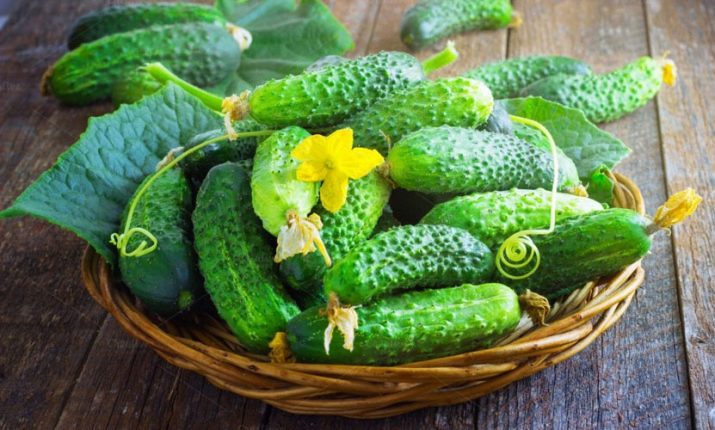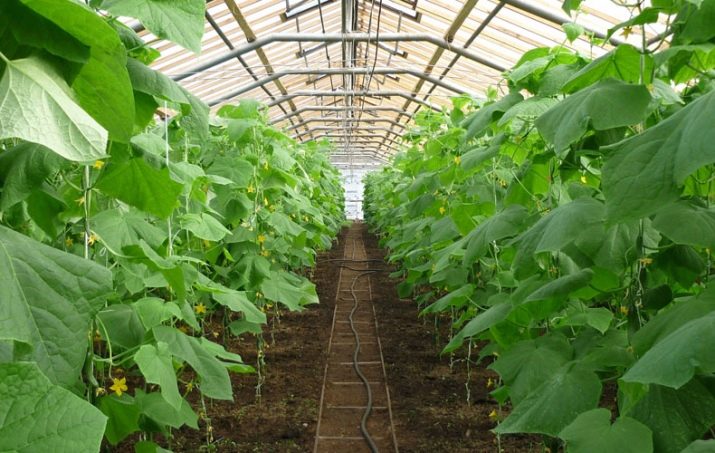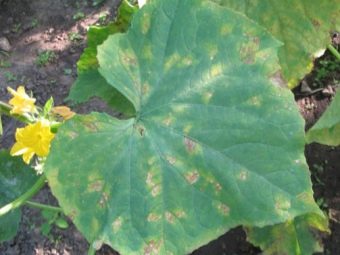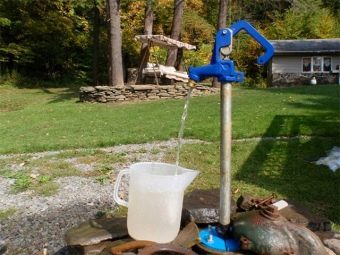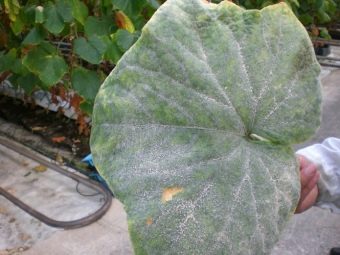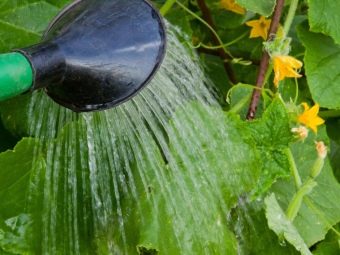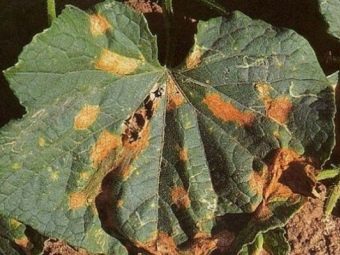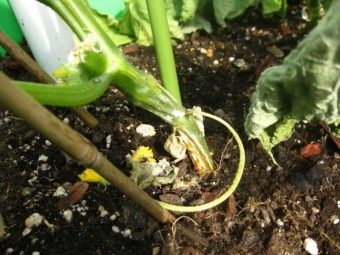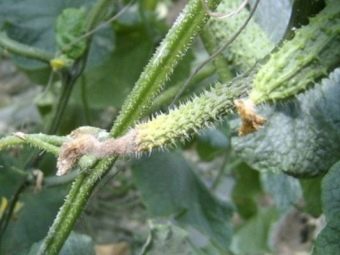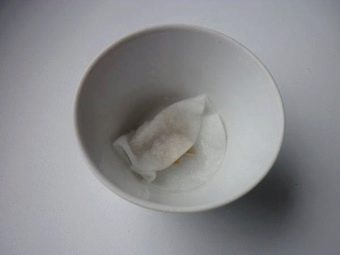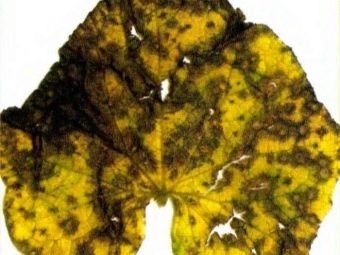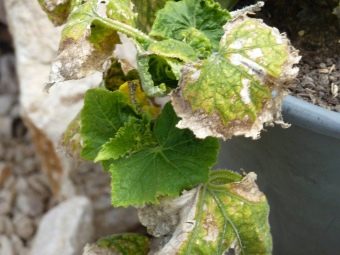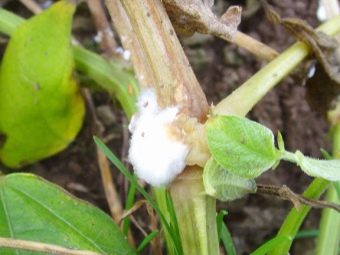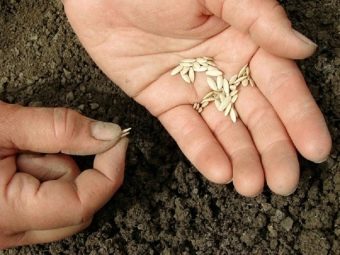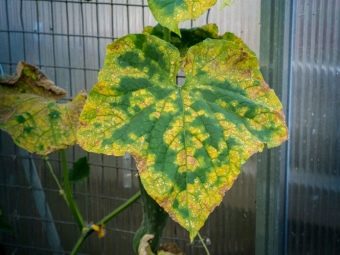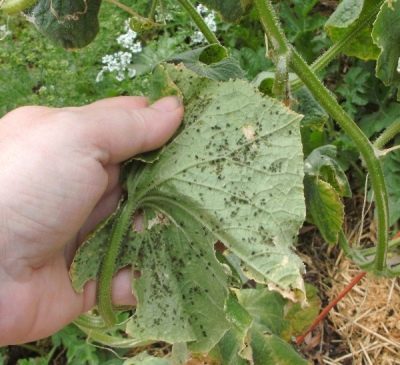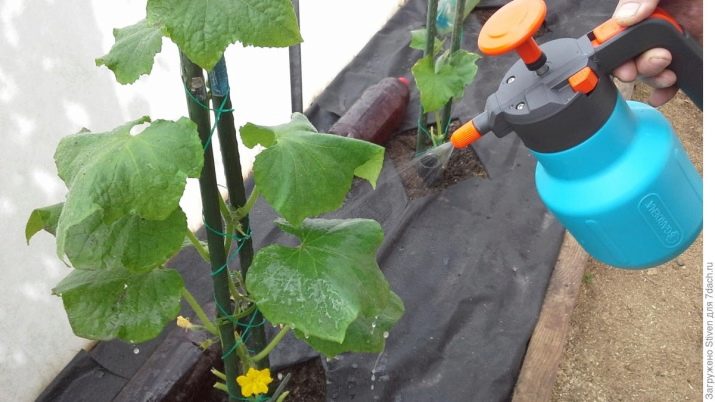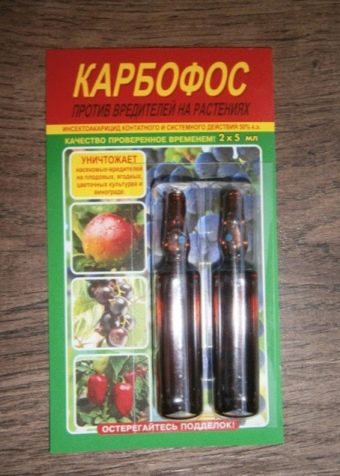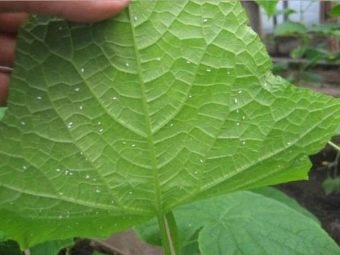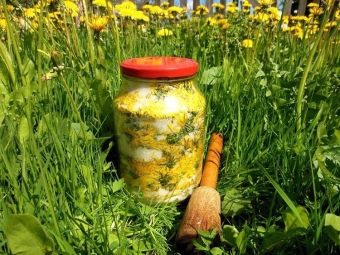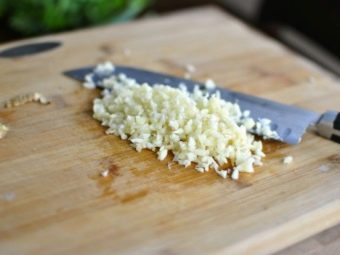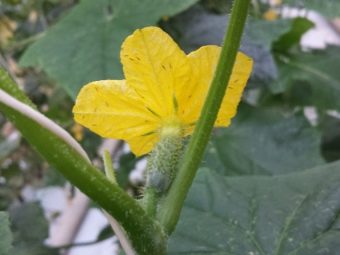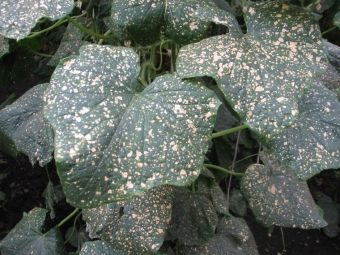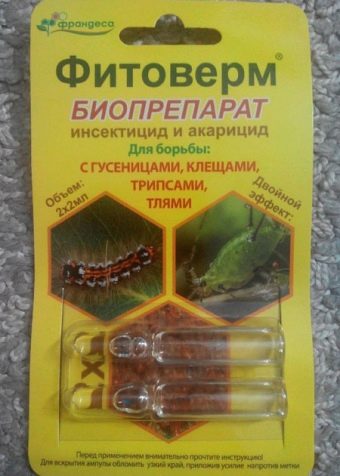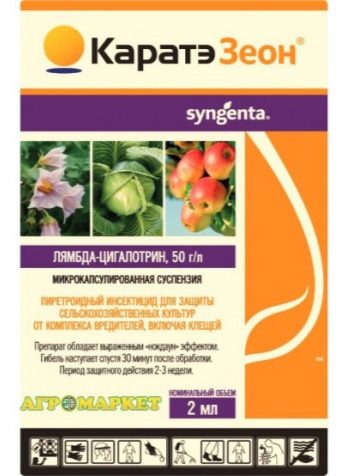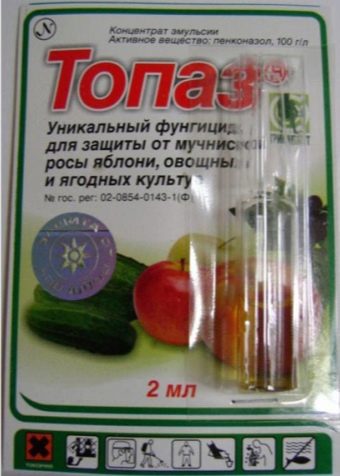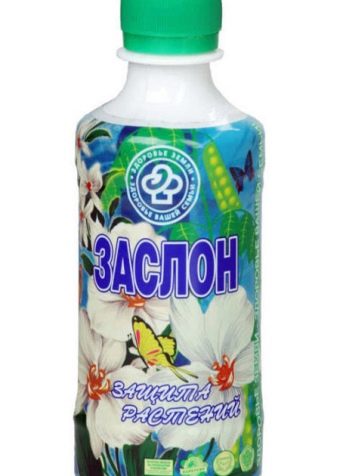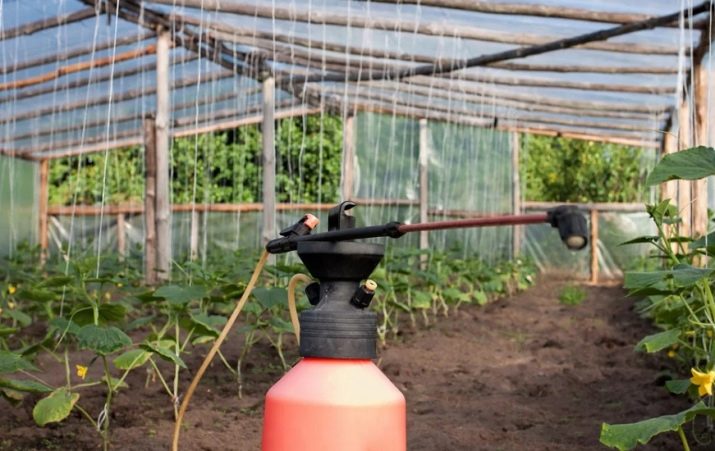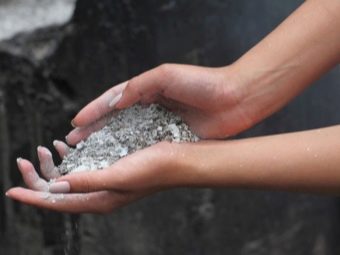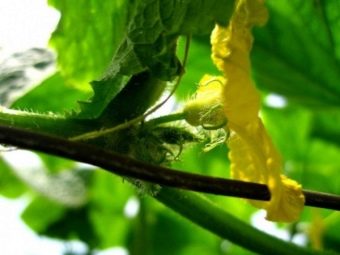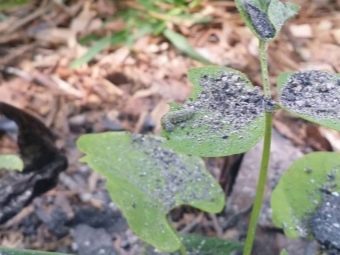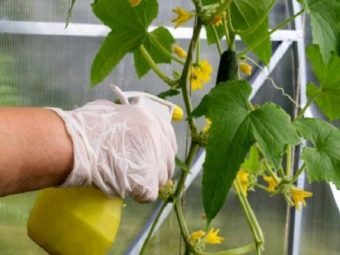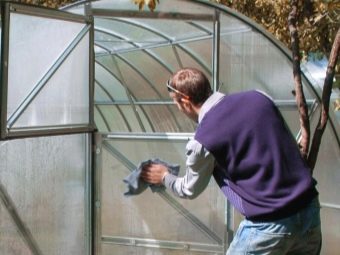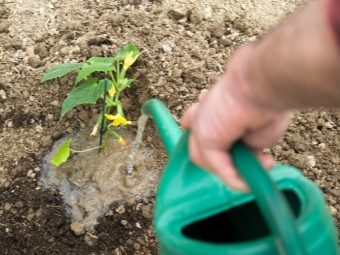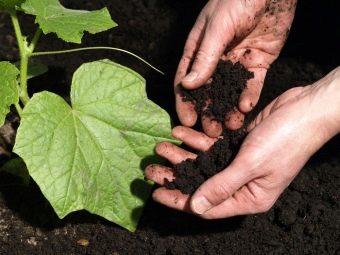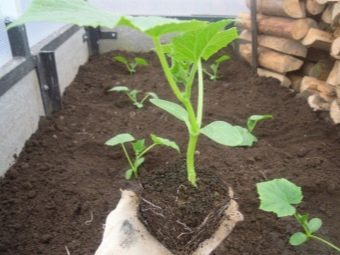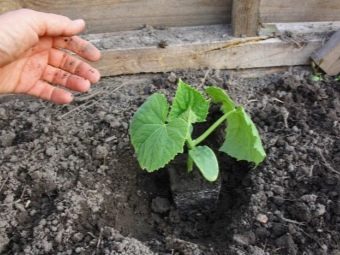Ways of processing cucumbers in the greenhouse from diseases and pests
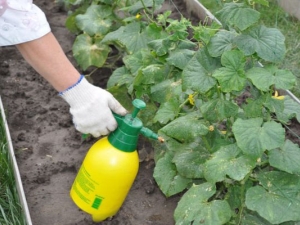
Who among us does not like to crunch fresh and strong salted cucumber? Vegetable from its beds can not be compared in taste with the store. To make the cucumbers happy with their yield, you need to take good care of them. Proper watering, tying, pinching, loosening the soil and weeding, maintaining a balance of temperature and time of disembarkation - this is not all the activities carried out to obtain the best quality product. An important step is the prevention of disease.
The reasons
To process the greenhouse and the soil in it should be for several reasons. There are two main ones. This is a special microclimate of a closed, relatively autonomous premises and the inability to conduct crop rotation every year.
The lack of crop rotation leads to serious diseases, from which it is very difficult to get rid of, growing cucumbers in one place.
It is impossible to move the greenhouse from place to place every year. It is no secret that most gardeners grow vegetables for personal consumption, that is, not for sale. Therefore, they have only one greenhouse at their disposal. Less often there are two of them: separately for tomatoes and cucumbers.
Under the conditions of a closed room, a special microclimate is formed. The air becomes quite warm and humid. And this is an excellent nutrient medium for many pathogens.
Major diseases
Greenhouse cucumbers can be susceptible to a variety of diseases. For the treatment of plants are often used for decades proven folk methods. Universal drugs sold in stores have also received widespread use. They are easy to use and give a good stable result in the fight against parasites and insects.
Downy mildew - The eternal headache of gardeners and gardeners of our decade. Lesions occur in any period of cultural development. It is difficult to get rid of it, because powdery mildew lasts up to 7 years indoors. Yellow-green markings appear on the foliage. For 8-12 days, they continue to grow, and the leaves turn brown. The plant looks as if it was burned and then dries quickly in just 2 days.
In the people such phenomenon is often called “acid rain”. Although it is clear that in the environment of sheltered ground in the greenhouse rain can not get. The reason for the appearance of powdery mildew is in rather strong temperature fluctuations during the day. When the daytime temperature reaches 30 degrees Celsius, and at night it drops sharply to 10-12, condensate forms on the inner surface of the greenhouse. Its cold drops falling on parts of the plant, and lead to the occurrence of the disease. The disease can occur due to improper watering, as well as the simultaneous coincidence of several adverse factors.
Powdery mildew although similar in name to its fellow, but manifests itself somewhat differently. When it occurs, cucumber leaves cover a whitish bloom, which rapidly spreads over the area. For this reason, the leaves dry, and the plant dies in a few days. The disease appears due to the constant planting of cucumbers constantly in one area.
Temperature differences, ice-cold water, and no weeding can also lead to its occurrence.
Brown spot may appear from drafts, watering cucumbers with hard icy water on top of the leaves, at high relative humidity or average daily temperature fluctuations. Often several factors lead to the disease. The disease is manifested by brown sores appearing on the plant and fruits. From them the liquid begins to flow, and the plant can die in a week.
Quickly spread in the ground root rot and often appear when watering with icy water or lowering the temperature of the earth. The disease can attack the plant at the seedling stage, if the cucumber goes too deep into the ground when planted in protected ground.Leaves affected by decay wither, especially before the onset of fruit. This is observed even in sunny weather. If you loosen the soil at the base of the stem, then the yellowed stem becomes visible.
A common cause of the disease is a common mistake of gardeners, who in the summer spud or even sprinkle the base of the bush with cotyledon leaves on the ground.
Gray rot often appears in leaf sinuses or inflorescences. This is due to the excessively dense planting of plants and, as a consequence, insufficient air circulation within the shelter. In addition to this, nighttime cold spells (especially with prolonged rainfall) and the use of low temperature from a well for irrigation can provoke rot. Dense planting is bad not only in the greenhouse microclimate. As a result of the thickening of greenery, cucumbers begin to produce many male barren flowers, located in one bundle of ovary. They, in turn, quickly fade, rot, and there is a gradual defeat of the whole plant.
Black mold leaves Avoid seed treatment before planting. This is a fungus that affects the entire plant entirely. The disease begins with brown spots on the leaves, gradually spreading over the area and reaching very large sizes. Then the plant dries, dark spots appear on it, in place of which a black bloom like a web appears. The fungus progresses from a large difference between temperatures during the day.
A significant problem is that the infection can be long on all elements of the structure of the shelter.
Sclerotinia (white rot) appears on various parts of the cucumber shoot in the form of small whitish spots, gradually blackening. In their place there are areas with a white soft mushroom-like bloom. Infected areas become slippery, soft and lose their vitality. There is a disease from fungi that overwintered in the soil, and poorly harvested organic residues serve as a nutrient medium. Particularly rapidly, the infection begins to multiply due to an increase in the relative humidity of the soil and air.
Anthracnose leaves its marks on the stems, foliage, cucumber ovaries. The leaves are covered with yellow-red (for which the disease got its name) with spots of different sizes. Black-brown wet ulcers appear on the fruit. The cause of the disease often lies in the poor quality of the seeds that were collected from the plants affected by the coppice. Also, the fungus can appear from the soil, where it successfully overwinter in plant debris.
Under similar initial conditions, inadvertent cold watering and temperature drops can additionally provoke the rapid development of the disease.
Parasites
Different species of insects can take advantage of succulent plants in any kind of shelter: melon aphid, whitefly, thrips, slugs, spider mite, bear.
A common guest of our crops is melon aphid. It looks like a normal aphid, but yellowish and slightly larger. Ants breed it and plant their mini-farms on plants, planting wards aphid. Therefore, if ants are bred near your greenhouse, you should immediately take steps to destroy them.
Aphids can be detected if you look at the back of the sheet. Cucumbers are usually damaged in the second half of summer. On the upper part of the leaves appear yellowish lesions, which then darken. Infection leads to the death of ovaries, flowers and leaves, developing quite rapidly.
To help prevent the disease can thorough timely weeding. Fight insects by spraying the affected plants with tincture of red ground pepper, which must be added to freshly ground. In order to prepare a solution in ten liters of hot water, you will need 30 grams of ground hot chilli pepper, which is drawn in water a day.
In a stirred and filtered tincture add a tablespoon of soap and half a glass of organic ash. A simple home remedy will be enough to rehabilitate 5-10 square meters of the greenhouse.
It has long been popular and inexpensive, but extremely effective medicine based on ash and soap. To make it, take ten liters of hot water (60 degrees) and add 2-3 cups of ash and a small amount of soap (liquid is also suitable). The solution, infused over twenty-four hours, is well stirred and decanted through gauze.
A stronger remedy is karbofos. They are mainly filled with air, parts of the shelter's construction, a path, and the plants themselves sprinkle carefully. For the treatment of parasite cucumbers in ten liters of warm water, use a full large spoonful of karbofos. When disinfecting the covering structure itself, two spoons are dissolved in the same amount of water. Sprayed cucumbers in dry weather with tightly closed windows. After that, the greenhouse is left and closed for a few hours, during which the aphid dies.
Effective in the fight with melon gum will also be the drug "Inta Vir", which is harmless to humans and destroys a wide range of different parasites.
The whitefly greenhouse, having chosen the back side of the leaf, sucks the juice out of it. As a result, white secretions appear on the plant, which serve as a nutritive atmosphere for black fungi. The sheets gradually turn black and dry. The cause of the appearance of the insect in the greenhouse are weeds.
To get rid of pests all the windows and openings of the greenhouse are covered with one layer of gauze so as not to disturb the air circulation. Over install glue traps. To attract insects, it is advised to paint the frames around them yellow and smear with petroleum jelly with the addition of a few drops of honey. Then, the infected plant surfaces, especially the lower ones, are thoroughly washed with clean, slightly warm water.
The remedy to get rid of the whitefly is an infusion of dandelions. For its preparation, the leaves and roots of the plant are used, which are soaked in water for two hours. Such an infusion is well stirred, filtered and irrigated with leaves. As a preventive treatment, treatment can be carried out every seven or ten days. For the same purpose, chopped garlic cloves are used.
Like other insect pests, thrips inhabit the reverse side of cucumber leaves. Especially they love to suck the juice from the young tender leaves. In places of bites appear small bright circles. Gradually, the lesion becomes more pronounced, as the leaves are covered with thin silver lines, indicating the presence of air inside the sheet.
The plant develops poorly, receives little light, loses leaves and flowers. With the destruction of thrips, you should not hesitate, because they multiply very quickly. If you notice the first signs of a lesion, you can try the folk method of processing broth celandine or garlic. With progressive infection, it is better to use modern insecticides: “Fitoverm”, “Intavir”, Karbofos, “Karate” and others.
What to handle?
With the appearance of downy mildew, it is necessary to immediately stop watering and all dressings. The greenhouse must be well ventilated. As soon as the moisture in the shelter decreases, it is possible to spray the cucumbers by spraying. For this purpose, suitable drugs "Topaz" and "Oxy". To get the drug, in a bucket of water you need to dilute one ampoule or two tablets of the substance. The temperature of the working substance should not be below 22 degrees. After treatment, the shelter is again well ventilated. Cucumbers do not water during the week, trying to keep the air temperature within 16 -28 degrees.
Powdery mildew is destroyed with Topaz. One vial is diluted with eight liters of water at room temperature. Spray this solution on a plant through a small spray.Suitable in the fight against the disease and the solution of potassium permanganate (1.5 grams per bucket of water). You can also use a stronger drug "Barrier".
It is important to remember that action is needed immediately, as the disease spreads very quickly.
If the disease is just beginning to manifest itself, you can use the folk remedy. In 10 liters of clean warm water (about 25 degrees) dilute a liter of diluted cow manure and a spoonful of urea. The solution is used for irrigation in good weather, carefully processing the leaves on both sides.
When the cucumbers are sick, when detecting traces of brown spot, watering is stopped for 5-7 days, and the greenhouse is well ventilated by opening all the doors and air vents. This is done in warm, dry weather. Well process cucumbers "Fundazol": for a bucket of water you need 30 grams of the substance. Spray the plants twice with an interval of five days. After treatment, it is necessary to ventilate the greenhouse well by opening the vents.
Having noticed the traces of root rot disease, prepare a solution of copper sulfate. It will be enough to 0.5 liters of water and a teaspoon of powder. A substitute for the substance can be copper oxychloride, mixed with three tablespoons of ordinary ash. These ingredients are thoroughly mixed.
When processing a plant, be sure to release the bottom of the stem to the very beginning of the root lobe from the ground, then apply the prepared solution to the root part and the stem itself to a height of 10-12 centimeters with a brush.
As an additional means, ash or chalk can be applied to the remaining sites of the disease. The greenhouse must be well dried. Further watering is done very carefully. Water should not fall on the parts of the plant, and only moisten the soil. The lesions at the bottom of the stem are left free from the ground.
If the plant still managed to die, it must be removed along with a layer of soil around the root and burned. The hole in the ground, remaining after the cucumber, is carefully poured with blue vitriol (one and a half spoons per 10 liters of water). This measure helps to prevent further development and spread of the disease in the soil of the greenhouse.
The best measure from the appearance of gray rot will be its warning: you should not try to plant cucumbers as often as possible in the struggle to save space. When a large number of barren flowers appear, they should be removed and sprinkled on these areas with ash. If the disease still appears, stop watering and carefully inspect all greenhouse plants. Infected areas are treated with a dry mixture of wood ash and copper sulfate (1 teaspoon of vitriol per 1 cup of ash). In the event of further development of the disease, the affected cucumbers are dug up and destroyed.
Preventing white rot is easier than getting rid of it. But if the cucumbers got infected, then, first of all, the infected areas should be cut off without pity. Sections are processed with charcoal, lime or chalk. To help the plant cope with the disease can top dressing. The nutrient solution is prepared from 10 grams of urea, one gram of blue vitriol and the same amount of zinc sulfate. All this is dissolved in 10 liters of warm water.
The appearance of a vermilion is prevented by proper crop rotation and careful harvesting of plant residues at the end of the season. If infection could not be avoided, the affected parts of the plant are carefully treated with 0.5% solution of copper sulfate. Calcification of damaged areas with lime and charcoal also helps. To prevent further spread of the disease, cucumbers are sprayed with 1% Bordeaux liquid once a week before the harvest.
Prevention
Most diseases of cucumbers are easier to prevent than to deal with their consequences, since microorganisms and pests multiply in greenhouses in warm, humid climates very quickly.
The most important measure for the prevention of disease is the proper preparation of the greenhouse for planting.If possible, it is best to observe crop rotation and change the crops grown in the greenhouse each year. If this is not possible, a number of simple plant protection measures will help.
After the end of the summer, the remains of plants are carefully removed from the greenhouse with a clod of earth and burned. In the greenhouse provide good airing and drying in the last warm autumn days. Ground the soil, and the wells after removing the plants are treated with a solution of manganese or copper sulphate. It is also good to carefully treat the surface of the greenhouse, the coating (if it is permanent) and the frame.
Before germination, seeds should preferably be processed. The seed itself is best purchased from a trusted manufacturer. So you do not risk getting low-quality seeds that can be taken from infected plants.
To protect young shoots apply preventive weekly treatment. In the care of the plant, it is important to observe the temperature regime most favorable for the culture, as well as the mode of irrigation, weeding and loosening. We carry out weeding regularly in the greenhouse, preventing overgrowth, since it is through weeds that many harmful insects spread.
Frequent mistakes when growing
Sometimes it seems that we all know for a long time how to grow cucumbers properly. However, sometimes experienced gardeners in pursuit of crop yield make some mistakes that can be detrimental to the plant.
One such error is the thickening of the greenhouse space. Most fans have too small areas, and I want to grow everything and more. It also happens that tomatoes, cucumbers, eggplants, and peppers are side by side in the same greenhouse. Often gardeners plant plants in two or even three rows. To do this categorically should not be in order to avoid disruption of air circulation in the greenhouse. The room should be bright enough and well ventilated, it will serve as the correct prevention of many diseases of cucumber.
Often, due attention is not paid to the water temperature for irrigation, especially when it is hot outside. For good health, cucumber is a very important factor. Watering them should be no colder water than 22-25 degrees. When using cold water in combination with temperature fluctuations during the day, especially in hot weather, it is possible to stimulate the appearance of many bacterial diseases, such as all kinds of rot and powdery mildew.
The important point is the correct planting of seedlings. It is impossible to bury the plant too much into the ground. Cotyledon leaves should always remain in the air, and the basal part of the stem should be provided with a sufficient amount of air. Hilling or mulching of the plant will also be a mistake.
Compliance with these tips will help you prevent potential problems and protect cucumbers from many diseases. Instead, the plants will enjoy an excellent harvest.
The technology of growing cucumbers in the greenhouse, see below.

